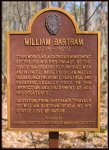Randy
Senior Member
Anybody ever read any of his writings?
I bought a book during Christmas about his travels through Georgia. I can not put it down. I read the book then look at my Georgia Gazetter and follow his travels. It is very interesting and informative, almost addictive.
I bought a book during Christmas about his travels through Georgia. I can not put it down. I read the book then look at my Georgia Gazetter and follow his travels. It is very interesting and informative, almost addictive.



